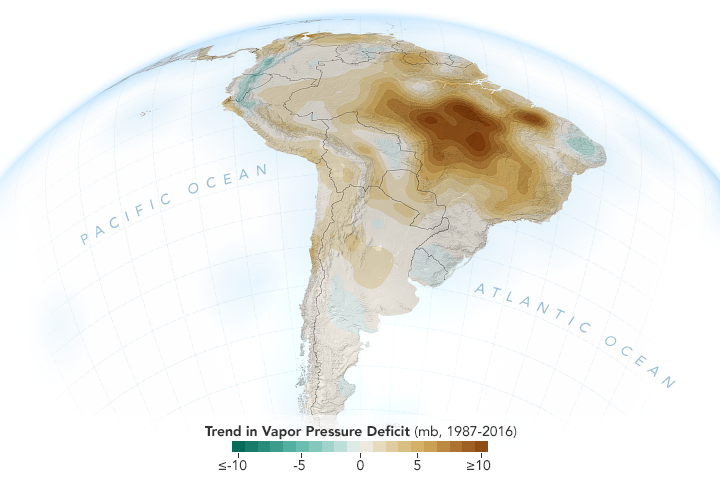Published on 8 November 2019
Over the past twenty years, the atmosphere above the Amazon rainforest has been drying out, increasing the demand for water and leaving ecosystems vulnerable to fires and drought. That is the conclusion of a new NASA study, which also shows that this increased dryness is primarily the result of human activities.
Scientists at NASA’s Jet Propulsion Laboratory (JPL) analyzed decades of ground and satellite data to track both how much moisture was in the atmosphere over the Amazon rainforest and how much moisture was needed to maintain the ecosystem. The map above shows the decline of moisture in the air over South America from 1987 to 2016, particularly across the south and southeastern Amazon, during the dry season months (August through October). Using data from NASA’s Atmospheric Infrared Sounder (AIRS) on the Terra satellite and other instruments, the researchers calculated the vapor pressure deficit (VPD)—the difference between the amount of moisture in the air and how much moisture the air can hold when it is saturated. When VPD increases, the amount of moisture in the air relative to its capacity is reduced and the air is drier.
